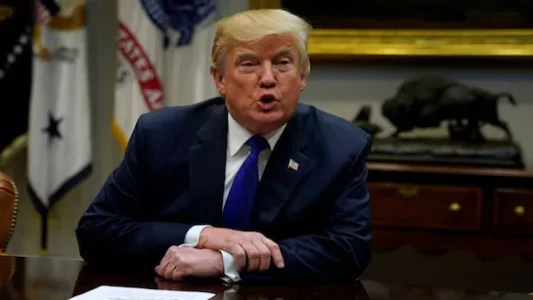- Joined
- Jul 5, 2024
- Messages
- 1,298
- Likes
- 8,161
Lol polieve is also complaints to Khalistanis.
lol multiple sources are now showing liberals taking a sizable lead over the cons.
Looks like Trump’s 51st state rhetoric flipped the game for liberals? @GaudaNaresh
PP must be feeling gutted. Dude was way ahead just a month ago.
View: https://x.com/polymarket/status/1905302034162876628?s=46
lol multiple sources are now showing liberals taking a sizable lead over the cons.
Looks like Trump’s 51st state rhetoric flipped the game for liberals? @GaudaNaresh
PP must be feeling gutted. Dude was way ahead just a month ago.
View: https://x.com/polymarket/status/1905302034162876628?s=46
According to an indictment filed in U.S. District Court in Minnesota, Mohammad Jawaid Aziz and two unnamed co-conspirators allegedly obtained thousands of dollars worth of banned equipment for Pakistan's military and weapons programs through a series of front companies.
B.C. man accused in conspiracy to obtain U.S. technology for Pakistan's nuclear weapons program
View: https://youtu.be/EIFlLsN7qvE
CSIS seems to have some sort of working relationship with ISI, based on the number of times they turn a blind eye on empty spaces. if the trends hold true, highly unlikely any canadian PM will take on pakiland.Wonder will Carney taker panga with Bhikaristan as his predecessor did with us?
| Category | Liberal Party (LPC) | Conservative Party (CPC) | Bloc Québécois (BQ) | New Democratic Party (NDP) | Green Party (GPC) |
| Leader | Mark Carney | Pierre Poilievre | Yves-François Blanchet | Jagmeet Singh | Elizabeth May |
| Projected Seats | 151–226 (~191) | 94–156 (~104) | 12–29 (~19) | 0–18 (~2) | 0–1 (~1) |
| Leading/Elected Seats | ~111 | ~104 | ~19 | ~2 | 1 |
| Popular Vote (Preliminary) | 46.80% | 39.60% | 6.90% | 4.60% | 0.90% |
| Polls Reported | 48127/75485 | 48127/75485 | 48127/75485 | 48127/75485 | 48127/75485 |
| Regional Performance - Ontario (121 seats) | Dominant in urban | Strong in rural/suburban | N/A | 0 seats | 0 seats |
| Regional Performance - Quebec (78 seats) | Leading in 41 ridings | Leading in 11 ridings | Leading in 25 ridings | Leading in 1 riding | 0 seats |
| Regional Performance - Alberta (37 seats) | Limited urban wins | Dominant | N/A | Weak | 0 seats |
| Regional Performance - British Columbia (43 seats) | Split urban | Split urban | N/A | Weak | 1 seat |
| Regional Performance - Atlantic Canada (32 seats) | Swept most ridings | Competitive in NB | N/A | Weak | 0 seats |
| Regional Performance - Prairies/Territories (32 seats) | Urban pockets | Dominant | N/A | Weak | 0 seats |
| Vote Efficiency | High (ON QC) | Low (West-heavy) | Moderate (QC only) | Low | Very low |
| Leader’s Riding Outcome | Won Nepean (likely) | Won Carleton | TBD | Resigned post-election | Won Saanich–Gulf Islands |
| Voter Turnout and Engagement | Value |
| Advance Voting | 7.3 million (25% above 2021) |
| Mail-in Ballots | 960000 returned (1.2M issued) |
| Estimated Turnout | 60–70% (28.9M eligible voters) |
| Demographic Priorities - Young (18–29) | Young (18–29): Change (57%) Boomers: U.S. relations (56%) |
| Demographic Priorities - Boomers | AB (63%), Prairies (58%): Change QC (57%): U.S. relations |



As Canada's Mark Carney wins election, what it means for India
India-Canada ties: With Mark Carney set to be back as Canadian Prime Minister, scripting a dramatic reversal in fortunes for the Liberals in the polls, ties with India seem to be in for a reset.www.indiatoday.in
Justinder Singh Castro's party wins the Cuckadian elections thanks to foreign interference, pic related
View attachment 32410
Castro's party was in the gutter, but this Orange gorilla had to bring them out of it with his Tareefs


Like I said, the orange man is in a mission to demolish right wing populists globally.
Should check out how the Kaneddian cuckservatives are continuing to dickride trump amidst their vidhwa vilaap - shit is legit hilarious!
Reddit - The heart of the internet
www.reddit.com
